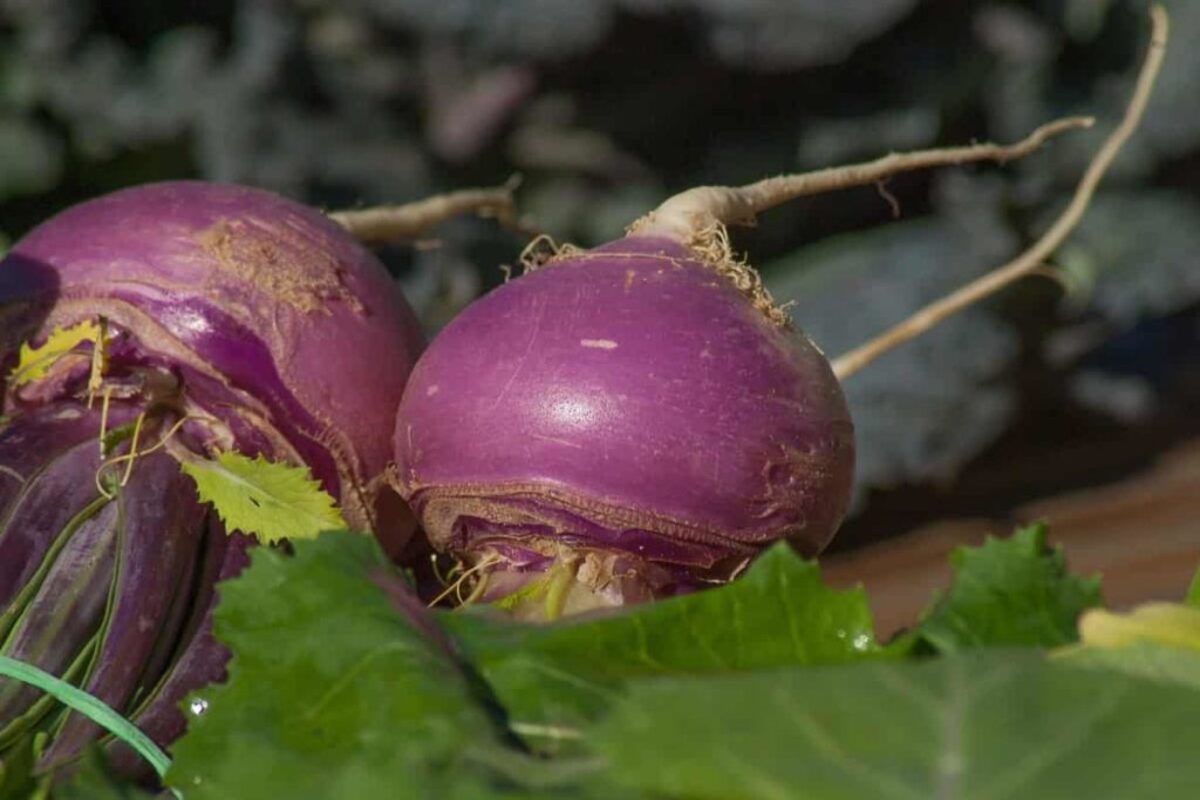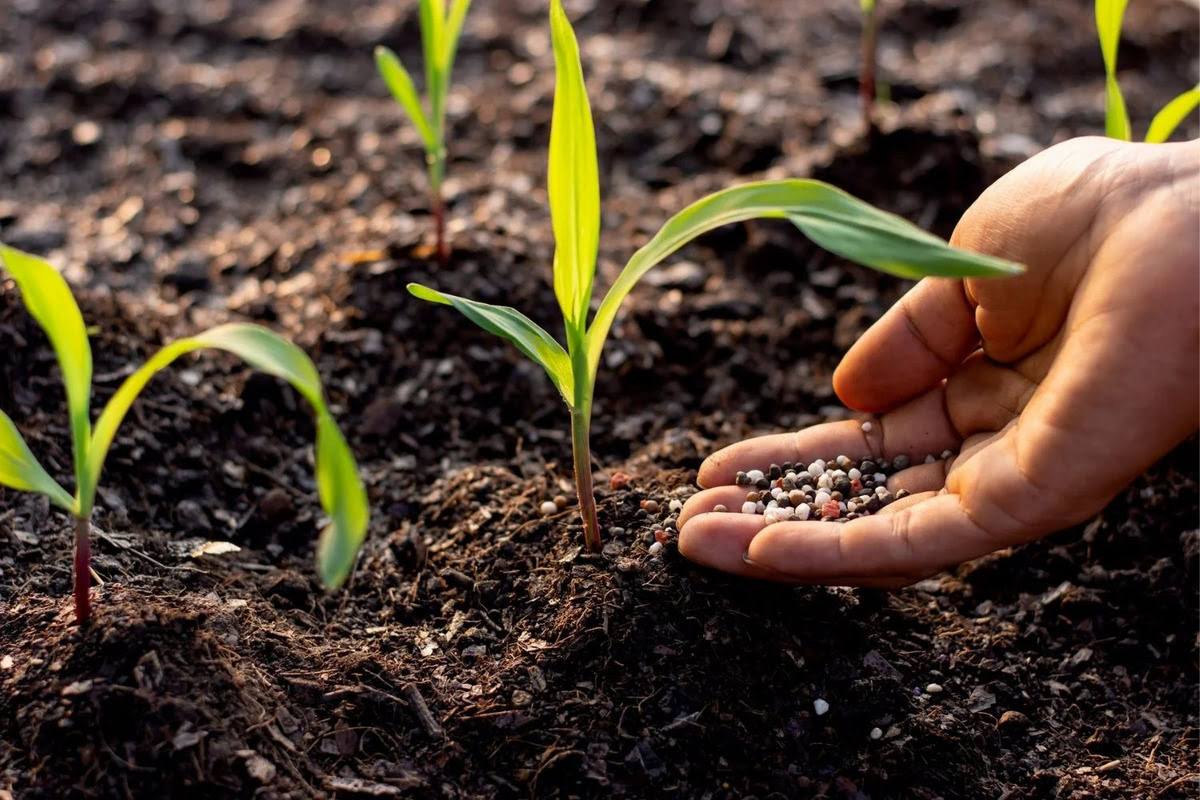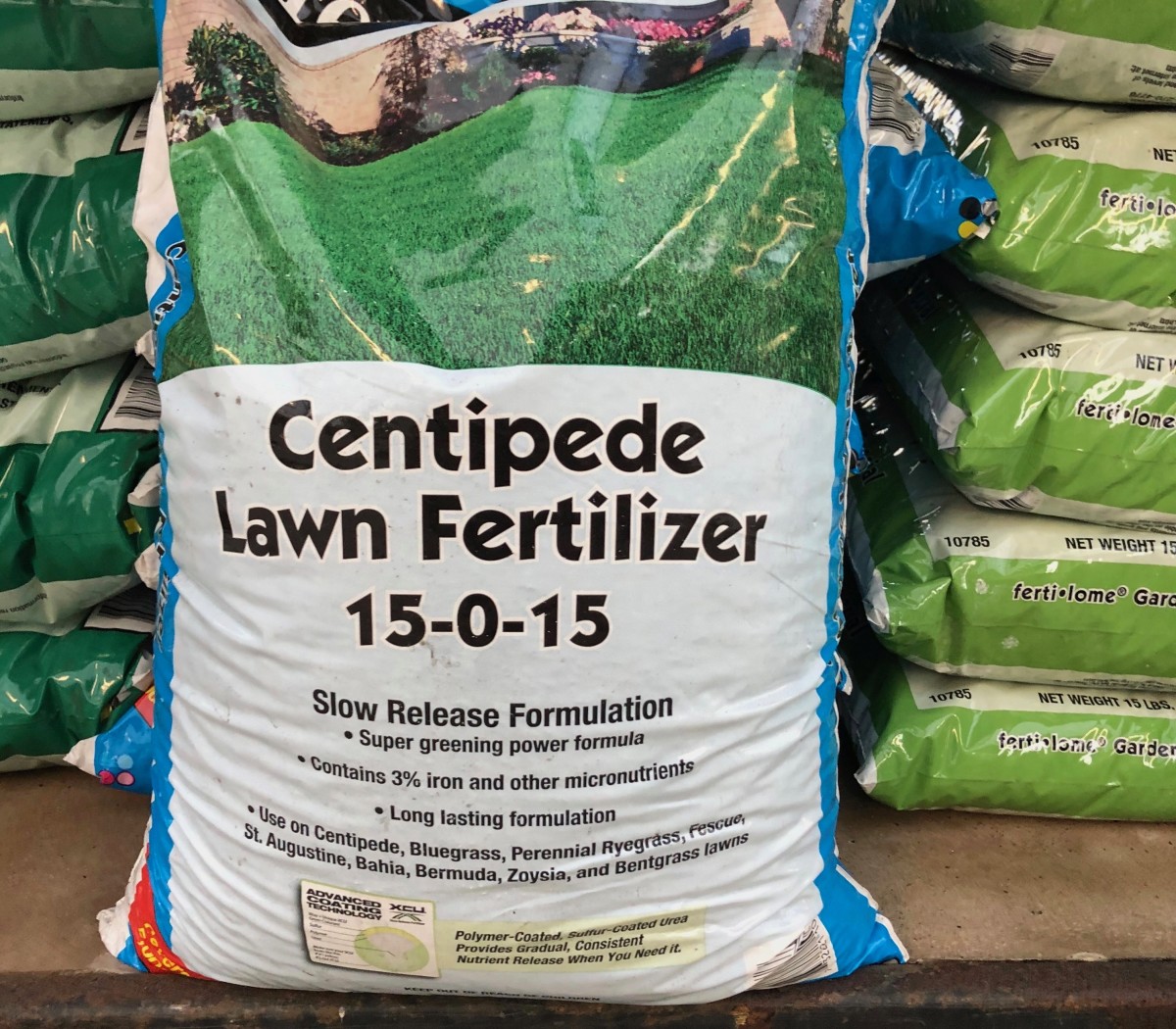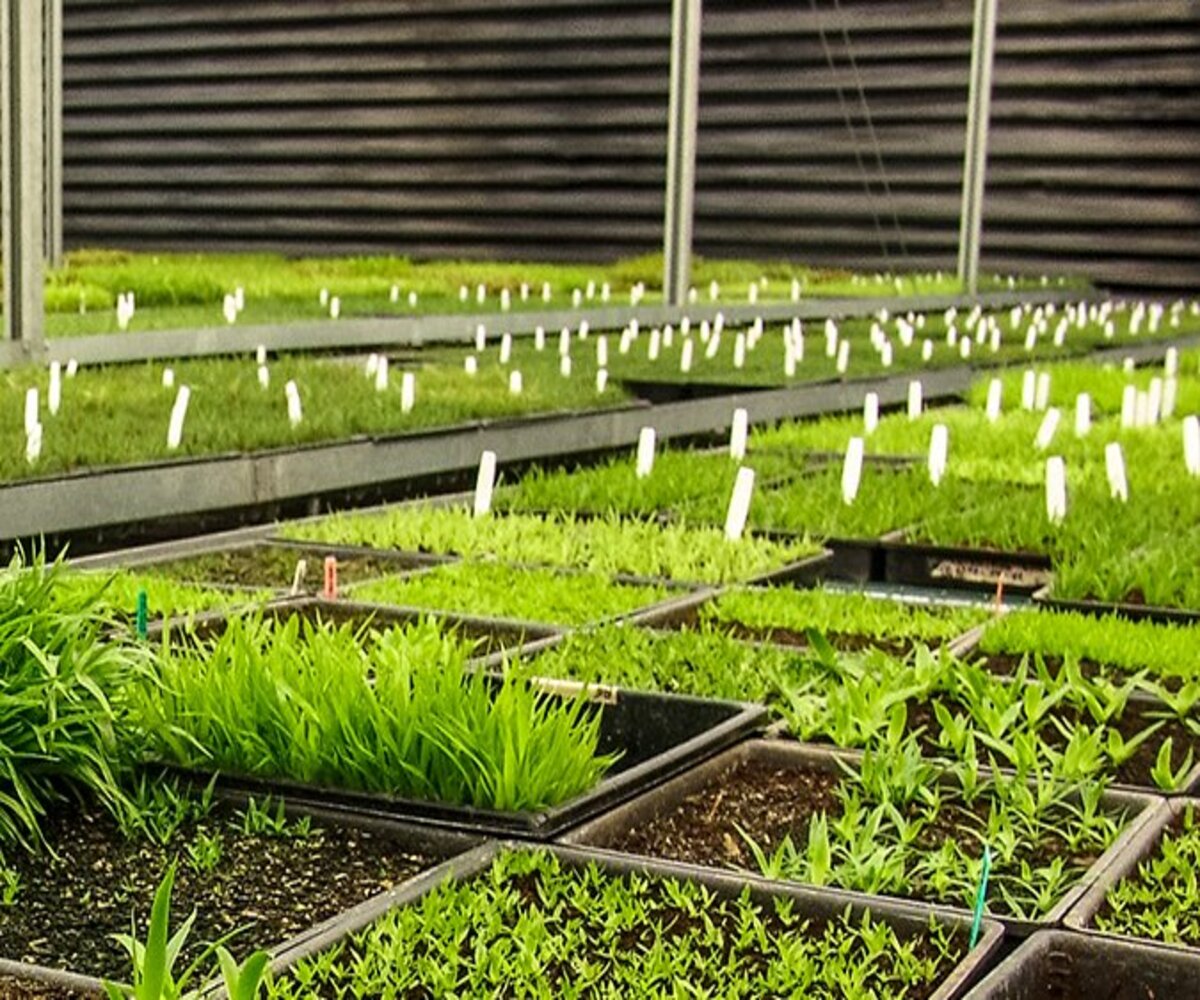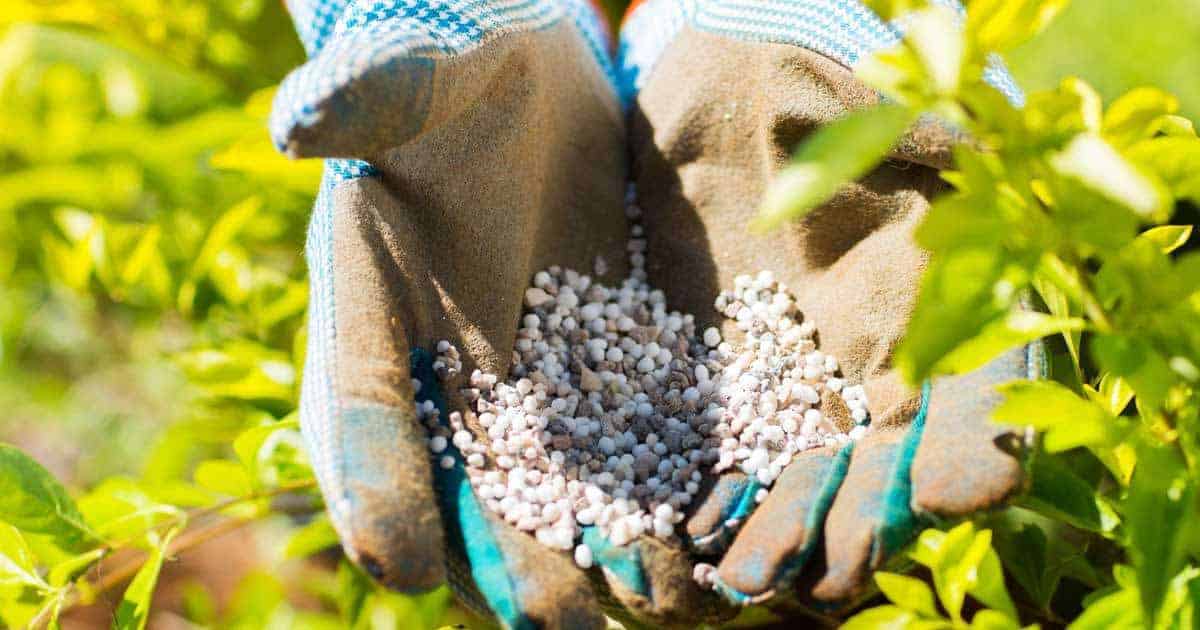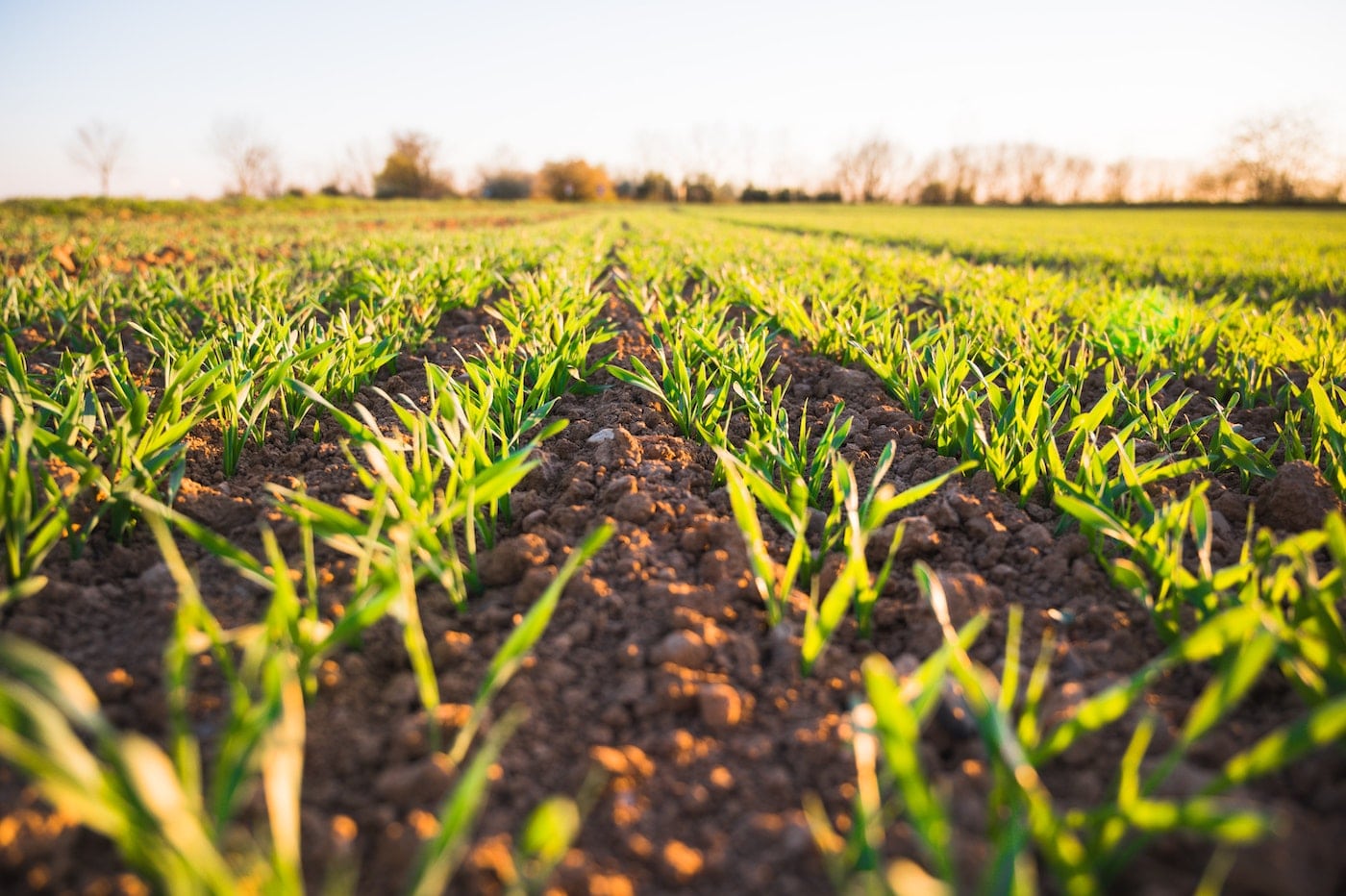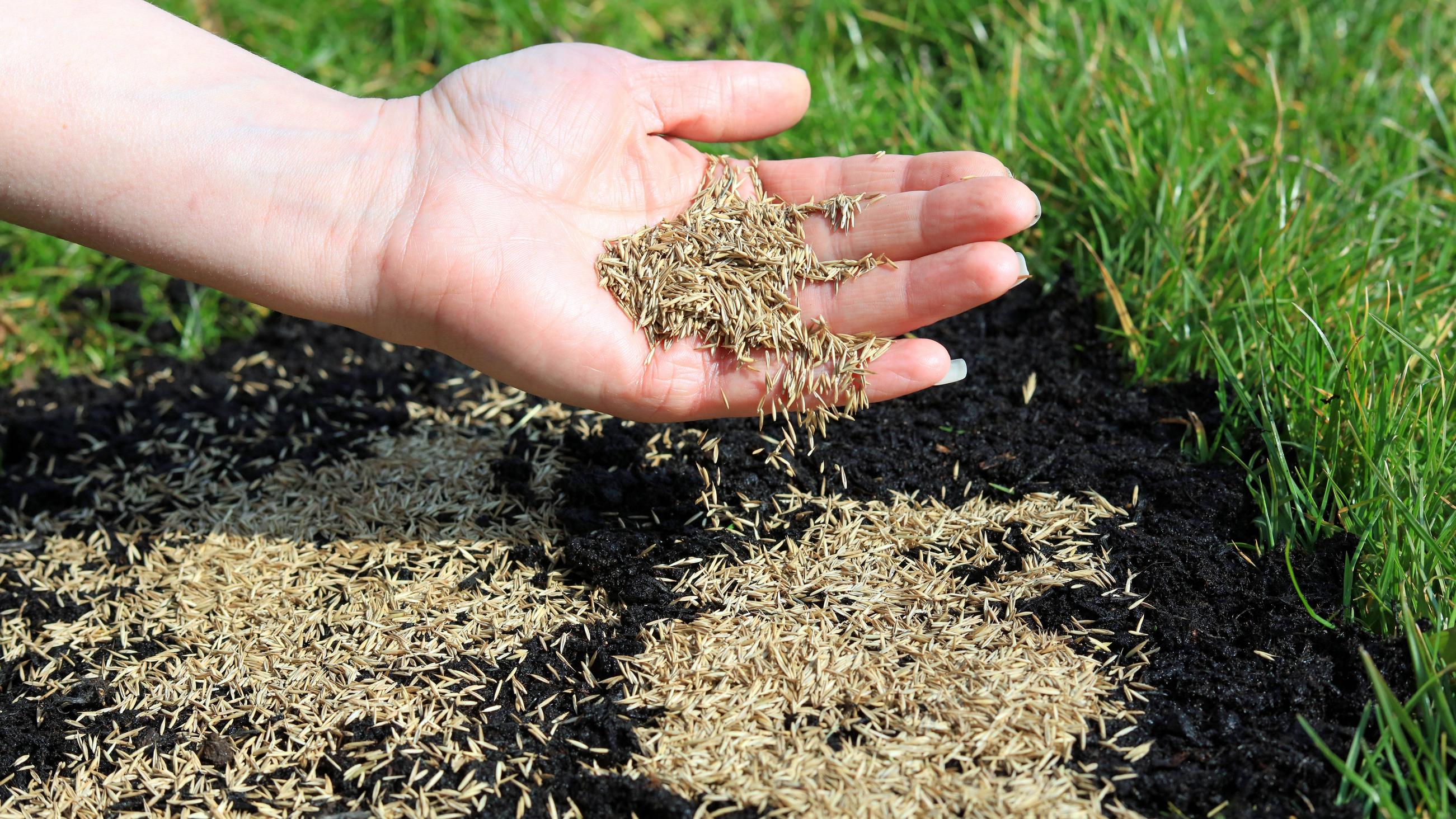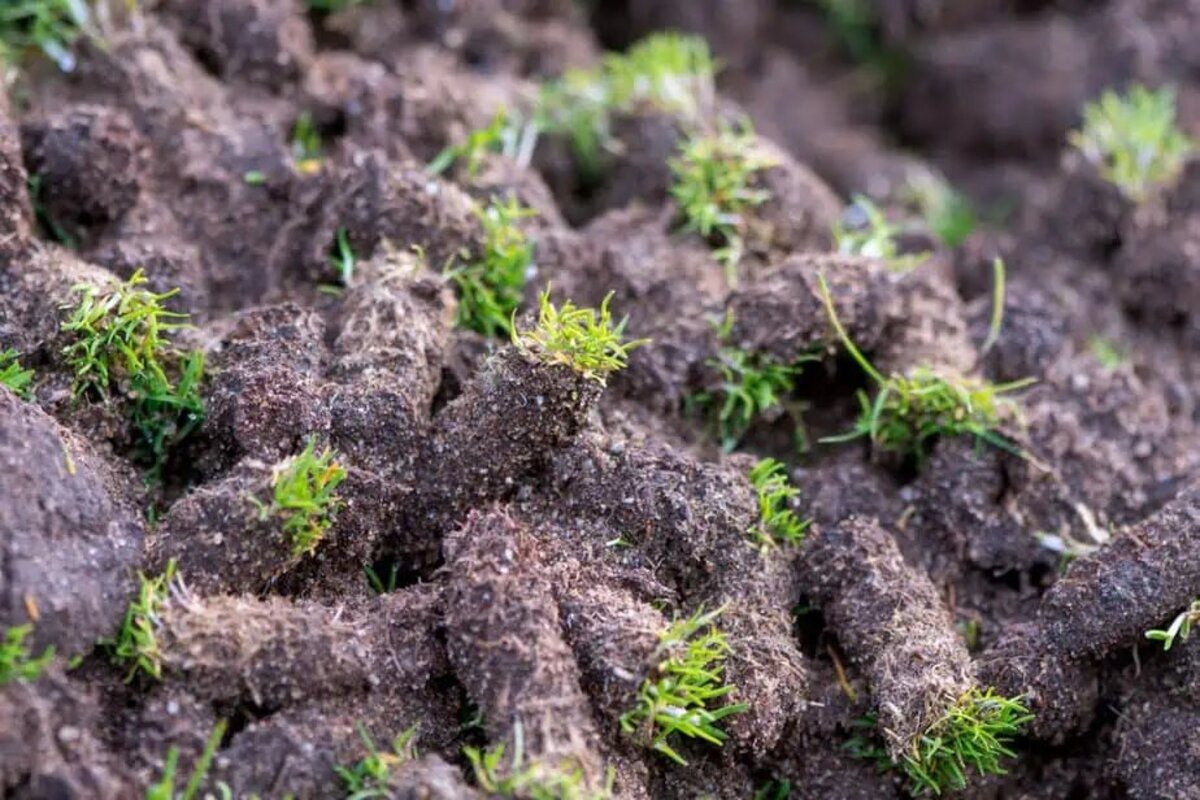Home>Types of Gardening>Ornamental Gardening>What Fertilizer To Use On Hydrangeas


Ornamental Gardening
What Fertilizer To Use On Hydrangeas
Modified: January 22, 2024
Discover the best fertilizer for hydrangeas and enhance your ornamental gardening. Learn how to boost the growth and health of your hydrangeas with the right fertilizer.
(Many of the links in this article redirect to a specific reviewed product. Your purchase of these products through affiliate links helps to generate commission for Chicagolandgardening.com, at no extra cost. Learn more)
Table of Contents
- Introduction
- Understanding Hydrangeas
- The Importance of Fertilizing Hydrangeas
- Factors to Consider Before Choosing Fertilizer
- Best Types of Fertilizer for Hydrangeas
- Organic Fertilizers for Hydrangeas
- Synthetic Fertilizers for Hydrangeas
- How to Apply Fertilizer to Hydrangeas
- Precautions and Tips for Fertilizing Hydrangeas
- Common Mistakes to Avoid When Fertilizing Hydrangeas
- Frequently Asked Questions (FAQs)
- Conclusion
Introduction
Ornamental gardening is a rewarding hobby that allows us to express our creativity and beautify our outdoor spaces. One popular plant often found in ornamental gardens is the hydrangea. With their lush, vibrant blooms and elegant foliage, hydrangeas add a touch of elegance and charm to any garden.
However, to ensure that your hydrangeas thrive and produce abundant blooms, proper care and maintenance are crucial. One essential aspect of hydrangea care is fertilization. Providing the right nutrients to your hydrangeas not only promotes healthy growth but also enhances the intensity and longevity of their blooms.
Choosing the right fertilizer for your hydrangeas can sometimes be a daunting task, given the array of options available. Understanding the specific nutritional needs of hydrangeas and considering other factors, such as soil composition and flower color preference, can help you make an informed decision.
In this article, we will guide you through the process of choosing the best fertilizer for your hydrangeas. We will explore the different types of fertilizer, including organic and synthetic options, and provide tips on how to properly apply fertilizer to maximize its benefits. Whether you are a seasoned gardener or just starting out, we aim to equip you with the knowledge to effectively nourish your hydrangeas and enjoy their stunning blooms year after year.
Understanding Hydrangeas
Before diving into the world of hydrangea fertilization, it is important to have a basic understanding of these beautiful flowering shrubs. Hydrangeas belong to the Hydrangeaceae family and are native to Asia and the Americas. They come in a variety of species, each with its own unique characteristics and bloom colors.
One of the key factors that sets hydrangeas apart is their ability to change flower color. This change is influenced by the pH level of the soil in which they are planted. Acidic soil conditions (pH below 7) tend to produce blue and purple blooms, while alkaline soil (pH above 7) results in pink and red blooms. The pH-neutral soil (pH 7) usually produces white or cream-colored flowers.
Hydrangeas thrive in full or partial sun, although some varieties can tolerate more shade. They prefer well-drained soil that retains moisture but does not become overly saturated. It is crucial to provide hydrangeas with adequate water, especially during hot and dry periods, to prevent stress and ensure healthy growth.
Understanding the type of hydrangea in your garden is important since different species have different growth habits and requirements. Some common hydrangea varieties include:
- Bigleaf hydrangea (Hydrangea macrophylla): Known for its large, showy blooms, this variety is further categorized into mophead hydrangeas, which have spherical flower clusters, and lacecap hydrangeas, which have a flat flowerhead surrounded by smaller blossoms.
- Smooth hydrangea (Hydrangea arborescens): This variety features large, rounded flower clusters and is more tolerant of colder climates than other hydrangea species.
- Panicled hydrangea (Hydrangea paniculata): This type of hydrangea produces elongated, cone-shaped flower clusters and is known for its versatility and adaptability to different growing conditions.
- Oakleaf hydrangea (Hydrangea quercifolia): Named for its oak-shaped leaves, this variety showcases long-lasting white flower clusters and attractive fall foliage.
Being familiar with the specific traits and growth habits of your hydrangea species will help you provide the best care and nourishment for your plants.
The Importance of Fertilizing Hydrangeas
Fertilizing hydrangeas is a crucial aspect of their care that should not be overlooked. While these stunning shrubs are generally hardy and resilient, they still require a balanced supply of nutrients to thrive and produce abundant blooms.
One of the primary reasons for fertilizing hydrangeas is to provide them with essential macronutrients and micronutrients. These nutrients are vital for the plant’s overall health and growth. Nitrogen (N), phosphorous (P), and potassium (K) are macronutrients that hydrangeas need in larger quantities. Nitrogen promotes leaf and stem growth, phosphorus aids in root development and flower production, and potassium contributes to overall plant strength and disease resistance.
In addition to macronutrients, hydrangeas also require micronutrients, such as iron, magnesium, and calcium, in smaller quantities. These micronutrients play a vital role in supporting various metabolic processes within the plant and ensuring optimum growth and flower color development.
Fertilizing hydrangeas is especially important if your soil is lacking in nutrients or if your plants are showing signs of nutrient deficiencies. Common symptoms of nutrient deficiency include stunted growth, yellowing leaves, and poor blooming. By providing the necessary nutrients through fertilization, you can help address these deficiencies and promote healthy growth and vibrant blooms.
Furthermore, proper fertilization can significantly impact the intensity and longevity of hydrangea blooms. The right balance of nutrients encourages the production of larger, more vibrant flowers. It also helps extend the blooming period, allowing you to enjoy the beauty of your hydrangeas for a longer time.
It is important to note that different hydrangea varieties have specific nutrient requirements. For example, mophead hydrangeas (Hydrangea macrophylla) that produce blue or pink blooms require slightly different soil conditions than panicled hydrangeas (Hydrangea paniculata) that produce white or cream-colored flowers. Understanding the specific needs of your hydrangea variety will guide you in choosing the appropriate fertilizer and ensuring optimal growth and blooming.
Now that we understand the importance of fertilizing hydrangeas, let’s explore the factors to consider before choosing the right fertilizer for your plants.
Factors to Consider Before Choosing Fertilizer
When it comes to selecting the right fertilizer for your hydrangeas, it’s important to consider several factors to ensure that you provide them with the optimal nutrition they need. Taking these factors into account will help you make an informed decision and promote healthy growth and vibrant blooms.
The first factor to consider is the nutritional requirements of your hydrangeas. Different species and varieties may have varying needs for macronutrients and micronutrients. For example, hydrangeas that produce blue or pink blooms (Hydrangea macrophylla) prefer slightly acidic soil conditions, while panicled hydrangeas (Hydrangea paniculata) are more adaptable to different soil pH levels. Understanding your hydrangea’s specific nutrient requirements will guide you in selecting a fertilizer that meets those needs.
Next, consider the soil composition in your garden. Conduct a soil test to determine the pH level, nutrient content, and overall fertility of your soil. This information will help you identify any deficiencies or imbalances that may exist, allowing you to choose a fertilizer that addresses those specific issues. For instance, if your soil is lacking in phosphorus, you may opt for a fertilizer with a higher phosphorus content.
The timing of fertilization is also crucial. Hydrangeas should be fertilized at the appropriate times to ensure optimal absorption and utilization of nutrients. As a general rule, apply fertilizer in early spring before new growth begins and again in late spring or early summer when the plants are actively blooming. Avoid fertilizing in late summer or fall, as this can stimulate new growth that may not have enough time to fully harden off before winter.
Consider the form of fertilizer that best suits your preferences and garden setup. Fertilizers come in different forms, including granular, liquid, and slow-release formulations. Granular fertilizers are easy to apply and provide long-lasting nutrients. Liquid fertilizers are quickly absorbed by the roots and can provide a rapid nutrient boost. Slow-release fertilizers release nutrients gradually over time, eliminating the need for frequent applications.
Lastly, consider whether you prefer using organic or synthetic fertilizers. Organic fertilizers are derived from natural sources, such as compost, manure, or bone meal. They provide slow-release nutrients and improve soil structure. On the other hand, synthetic fertilizers are chemically formulated and provide a precise mix of nutrients. They are quick-acting and can be easily tailored to specific nutrient requirements.
By carefully considering these factors – the nutritional requirements of your hydrangeas, soil composition, timing of fertilization, form of fertilizer, and preference for organic or synthetic options – you can make an informed decision and choose the best fertilizer for your hydrangeas. In the next section, we will explore some of the best types of fertilizer for hydrangeas, including both organic and synthetic options.
Best Types of Fertilizer for Hydrangeas
When it comes to fertilizing hydrangeas, choosing the right type of fertilizer is crucial for providing them with the necessary nutrients for healthy growth and blooming. Fortunately, there are several options available, including both organic and synthetic fertilizers, each with its own advantages.
Organic fertilizers are derived from natural sources and offer a holistic approach to plant nutrition. They improve soil fertility, enhance soil structure, and provide a slow-release of nutrients over time. Some popular organic fertilizers for hydrangeas include:
- Compost: Compost is a nutrient-rich organic material that improves soil fertility and structure. It can be added as a top dressing around the base of the plant or mixed into the soil during planting.
- Manure: Well-rotted manure from animals like cows, horses, or chickens is an excellent source of organic nutrients for hydrangeas. Make sure to use well-aged manure to prevent burning the plants.
- Bone meal: Bone meal is a natural source of phosphorus, which promotes root development and flower production. It can be applied directly to the soil or mixed into the planting hole.
- Fish emulsion: Fish emulsion is a liquid organic fertilizer made from decomposed fish. It is rich in nitrogen and provides a quick nutrient boost to hydrangeas.
On the other hand, synthetic fertilizers are chemically formulated and provide a precise mix of nutrients. They are fast-acting and can be easily tailored to meet specific nutrient requirements. Some synthetic fertilizers suitable for hydrangeas include:
- Granular fertilizers: Granular fertilizers contain a balanced ratio of nitrogen, phosphorus, and potassium (NPK) and can be found in various formulations specifically designed for flowering plants. They are easy to apply and provide long-lasting nutrients.
- Liquid fertilizers: Liquid fertilizers are dissolved in water and can be applied directly to the soil or sprayed onto the leaves. They are quickly absorbed by the roots and provide a rapid nutrient boost to hydrangeas.
- Slow-release fertilizers: Slow-release fertilizers come in the form of pellets or coated granules that release nutrients gradually over an extended period. They are convenient to use and reduce the need for frequent applications.
When selecting a fertilizer, consider the specific nutritional needs of your hydrangeas, your soil composition, and your personal preference for organic or synthetic options. It’s also important to follow the instructions on the fertilizer packaging for proper application rates and timing.
Now that we have explored the different types of fertilizers available for hydrangeas, let’s move on to the next section and learn how to apply fertilizer to your plants effectively.
Organic Fertilizers for Hydrangeas
Organic fertilizers offer a natural and sustainable approach to nourishing your hydrangeas. They not only provide essential nutrients but also improve soil fertility and promote long-term plant health. Here are some popular organic fertilizers that are suitable for hydrangeas:
- Compost: Compost is a nutrient-rich organic material that enhances soil fertility and improves its structure. It contains a variety of essential nutrients, organic matter, and beneficial microorganisms. Apply a layer of compost around the base of your hydrangeas, avoiding direct contact with the stems, and gently work it into the soil.
- Manure: Well-rotted manure from cows, horses, or chickens is an excellent source of organic nutrients for hydrangeas. Make sure to use well-aged manure to prevent burning the plants. Apply a layer of manure around the base of the plants, ensuring it does not contact the stems, and gently incorporate it into the soil.
- Bone meal: Bone meal is a natural source of phosphorus, which is essential for root development and flower production. It also contains calcium, another important nutrient for hydrangeas. Before planting your hydrangeas, mix bone meal into the soil at the recommended rate specified on the packaging. You can also apply bone meal as a top dressing around established plants.
- Fish emulsion: Fish emulsion is a liquid organic fertilizer made from decomposed fish. It is rich in nitrogen, which promotes healthy leaf and stem growth. Dilute fish emulsion according to the instructions on the label and use it as a foliar spray or apply it directly to the soil around your hydrangeas.
Organic fertilizers are beneficial for hydrangeas because they gradually release nutrients, providing a sustainable and long-lasting food source for your plants. They also improve the soil structure, enhance moisture retention, and increase microbial activity, creating a healthier environment for your hydrangeas.
Remember, while organic fertilizers offer numerous benefits, they may take longer to show results compared to synthetic fertilizers. Be patient as your hydrangeas absorb and utilize the nutrients provided by organic fertilizers. Regular applications of organic fertilizers throughout the growing season will ensure continuous nourishment and support for your plants.
Now that we have explored organic fertilizers for hydrangeas, let’s move on to the next section and learn more about synthetic fertilizers and their benefits for these beautiful flowering shrubs.
Synthetic Fertilizers for Hydrangeas
Synthetic fertilizers are chemically formulated products that provide a precise mix of nutrients to meet the specific needs of your hydrangeas. They offer a convenient and fast-acting solution for enhancing plant growth and promoting vibrant blooms. Here are some common synthetic fertilizers suitable for hydrangeas:
- Granular fertilizers: Granular fertilizers come in various formulations with different NPK ratios, providing a balanced mix of nitrogen, phosphorus, and potassium. They are easy to apply and release nutrients slowly over time. Follow the instructions on the packaging for the recommended application rate and frequency.
- Liquid fertilizers: Liquid fertilizers are soluble formulations that can be quickly absorbed by the roots of your hydrangeas. They are available in concentrated form and need to be diluted with water before application. Liquid fertilizers are often applied as a soil drench or as a foliar spray to provide a rapid nutrient boost. Follow the instructions on the label for the correct dilution ratio and application method.
- Slow-release fertilizers: Slow-release fertilizers are granules or pellets coated with a special membrane that gradually releases nutrients over an extended period. They offer a convenient option for long-term feeding, as you only need to apply them less frequently. Follow the instructions on the packaging for the proper application rate and timing.
Synthetic fertilizers provide several benefits for hydrangeas. Firstly, they offer precise control over nutrient ratios, allowing you to tailor the fertilizer to your plant’s specific requirements. Secondly, synthetic fertilizers deliver nutrients in a readily available form, ensuring rapid uptake and utilization by your hydrangeas. This can be particularly beneficial if your plants are showing signs of nutrient deficiencies or require a quick nutrient boost to support their growth and blooming.
It is important to note that while synthetic fertilizers can be highly effective, they should be used carefully to avoid over-fertilization, which can damage your hydrangeas or lead to nutrient imbalances in the soil. Always follow the instructions on the fertilizer packaging and apply the recommended rates and frequencies for optimal results.
Whether you choose organic or synthetic fertilizers for your hydrangeas, the key is to provide them with the necessary nutrients to thrive and produce stunning blooms. Now that we have explored both organic and synthetic options, let’s move on to the next section and learn how to properly apply fertilizer to your hydrangeas.
How to Apply Fertilizer to Hydrangeas
Proper application of fertilizer is essential to ensure that your hydrangeas receive the necessary nutrients for healthy growth and abundant blooms. Here are some guidelines on how to effectively apply fertilizer to your hydrangeas:
1. Read the instructions: Start by carefully reading the instructions on the fertilizer packaging. Follow the recommended application rates and frequencies to avoid over or under-fertilization.
2. Timing: Apply fertilizer to hydrangeas in early spring before new growth starts and again in late spring or early summer when the plants are actively blooming. Avoid fertilizing during late summer or fall, as this can stimulate new growth that might not withstand the approaching winter.
3. Divide the total amount: For granular or slow-release fertilizers, divide the total amount into multiple smaller applications throughout the growing season, following the instructions on the packaging. This allows for a steady release of nutrients and prevents overloading the plants.
4. Apply evenly: Distribute the fertilizer evenly around the base of the hydrangeas, extending slightly beyond the drip line. Use a garden fork or a hand tool to gently work the fertilizer into the soil surface. Take care not to damage the roots or disturb the plants.
5. Water after application: After applying fertilizer, water the hydrangeas thoroughly to help the nutrients penetrate the soil and reach the roots. This encourages nutrient absorption and prevents any potential burning of the plant roots.
6. Consider foliar application: If using liquid fertilizer, you can opt for a foliar application. Dilute the liquid fertilizer with water according to the instructions and spray it onto the leaves, ensuring complete coverage. This method allows for quick nutrient absorption through the foliage.
7. Avoid direct contact with stems: When applying fertilizer, avoid direct contact with the stems or leaves of the hydrangeas. Excessive fertilizer contact can lead to leaf burn or other damages to the plant tissue. Keep a small buffer zone around the base of the plants.
8. Clean up any spills: If any fertilizer spills onto the foliage or surrounding areas, promptly clean it up to prevent potential damage. Use water to wash away any excess fertilizer and minimize any adverse effects.
Remember, each fertilizer may have specific instructions for application, so always refer to the packaging for guidance. By following these steps, you can ensure that your hydrangeas receive an even distribution of nutrients, promoting their overall health and enhancing their blooming potential.
Now that you know how to apply fertilizer to your hydrangeas correctly, let’s move on to the next section and explore some precautions and tips for fertilizing hydrangeas.
Precautions and Tips for Fertilizing Hydrangeas
Fertilizing hydrangeas is an important part of their care routine, but it’s essential to take some precautions and follow helpful tips to ensure the best results. Here are some precautions and tips to keep in mind when fertilizing your hydrangeas:
1. Follow proper dosage: Avoid over-fertilizing your hydrangeas, as excessive amounts of nutrients can lead to leaf burn, stunted growth, or even plant death. Always follow the recommended dosage and application rates specified on the fertilizer packaging.
2. Avoid fertilizing dormant plants: Do not fertilize hydrangeas when they are dormant during the winter months. Fertilizing during this period can disrupt their natural resting phase and may lead to weaker growth in the following season.
3. Apply fertilizer to moist soil: It’s best to apply fertilizer to moist soil to ensure proper absorption and minimize the risk of burning the roots. If the soil is dry, water the hydrangeas a day or two before fertilizing to ensure they receive the nutrients effectively.
4. Maintain a good watering schedule: Adequate watering is crucial for hydrangeas, especially after fertilizing. Watering helps to dissolve and distribute the applied fertilizer throughout the root zone and prevents nutrient concentration in one area. Regular watering also ensures that the nutrients are available to the plants when they need them.
5. Consider slow-release fertilizers: If you prefer a low-maintenance approach, consider using slow-release fertilizers. They release nutrients gradually over time, reducing the need for frequent applications. This can be particularly beneficial for busy gardeners or those who are new to hydrangea care.
6. Monitor pH levels: If you have blue or pink hydrangeas (Hydrangea macrophylla), monitor the pH levels of your soil. Adjusting the soil pH can influence the flower color. Use soil amendments, such as aluminum sulfate for more acidic conditions or lime for more alkaline conditions, as needed.
7. Observe signs of nutrient deficiencies: Regularly inspect your hydrangeas for any signs of nutrient deficiencies, such as stunted growth, pale or yellowing leaves, or reduced flower production. If you notice these symptoms, consider adjusting fertilization methods or nutrient ratios accordingly.
8. Store fertilizers properly: Ensure that you store fertilizers in a cool, dry place, away from direct sunlight or moisture. Proper storage prolongs the shelf life of the fertilizers and maintains their effectiveness for future use.
9. Use protective gear: When working with fertilizers, especially concentrated liquid formulas, consider wearing gloves and protective eyewear. Follow safety instructions provided on the fertilizer packaging to prevent any potential harm.
By following these precautions and tips, you can fertilize your hydrangeas effectively and promote their healthy growth and beautiful blooms. Remember, every garden is unique, so it’s important to observe and adjust your fertilization practices based on the specific needs of your hydrangeas.
Now that we have covered precautions and tips for fertilizing hydrangeas, let’s address common mistakes to avoid when fertilizing these stunning flowering shrubs.
Common Mistakes to Avoid When Fertilizing Hydrangeas
While fertilizing hydrangeas is essential for their health and blooming, it’s important to be aware of common mistakes to avoid in order to prevent potential harm to your plants. Here are some common mistakes to steer clear of when fertilizing hydrangeas:
1. Over-fertilizing: Applying excessive amounts of fertilizer can lead to nutrient imbalances, leaf scorch, or stunted growth. Follow the recommended dosage and application rates specified on the fertilizer packaging, and avoid the temptation to use more than necessary.
2. Applying fertilizer to dry soil: Applying fertilizer to dry soil can result in the concentration of nutrients in one area and increase the risk of burning the sensitive roots of your hydrangeas. Always ensure the soil is adequately moist before applying fertilizer.
3. Fertilizing during the wrong season: Avoid fertilizing hydrangeas during their dormant period in winter. Fertilizing during this time can disrupt their natural growth cycle and may result in weak growth once the growing season begins.
4. Using the wrong fertilizer: Hydrangeas have specific nutritional requirements, and using the wrong fertilizer or one that lacks essential nutrients can impact their growth and bloom production. Be sure to choose a fertilizer that is specifically formulated for hydrangeas or has the appropriate nutrient ratios.
5. Not considering soil pH: Soil pH plays a significant role in determining the flower color of certain hydrangea varieties. Ignoring soil pH levels or failing to adjust them accordingly can prevent your hydrangeas from achieving the desired bloom color. Test your soil and make required adjustments if necessary.
6. Applying fertilizer too close to the stems: Direct contact between fertilizer and the stems or leaves of hydrangeas can cause burns or other damage. Keep a small buffer zone around the base of the plants and avoid applying fertilizer directly onto the foliage.
7. Overlooking soil testing: Conducting regular soil tests can provide insights into nutrient deficiencies, soil pH, and other imbalances. Neglecting soil testing can lead to inadequate fertilization and hinder the health and blooming potential of your hydrangeas.
8. Not reading the instructions: Each fertilizer has specific instructions regarding dosage, application rates, and timing. Ignoring or misinterpreting these instructions can result in ineffective fertilization or adverse effects on your plants. Take the time to read and understand the instructions before applying fertilizer.
9. Using damaged or expired fertilizers: Using damaged or expired fertilizers can result in inconsistent nutrient release or even introduce harmful substances to your plants. Always check the packaging for any signs of damage or expiration dates before using the fertilizer.
By avoiding these common mistakes, you can ensure that your hydrangeas receive proper fertilization, leading to healthier plants, vibrant blooms, and an overall more successful gardening experience.
Now that we have addressed the common mistakes to avoid, let’s move on to the next section and answer some frequently asked questions about fertilizing hydrangeas.
Frequently Asked Questions (FAQs)
Here are answers to some commonly asked questions about fertilizing hydrangeas:
Q: How often should I fertilize my hydrangeas?
A: Hydrangeas generally benefit from fertilization once in early spring before new growth starts and again in late spring or early summer when they are actively blooming. Avoid fertilizing during late summer or fall as it can stimulate new growth that may not have enough time to harden off before winter.
Q: What is the best fertilizer for blue hydrangeas?
A: Blue hydrangeas (Hydrangea macrophylla) thrive in acidic soil conditions. To encourage blue blooms, consider using a fertilizer specifically formulated for acid-loving plants or one that is high in phosphorus. You can also amend the soil with aluminum sulfate or sulfur to lower the pH and enhance the blueness of the flowers.
Q: Can I use the same fertilizer for all types of hydrangeas?
A: While hydrangeas have similar nutrient requirements, different species and varieties may have varying preferences for soil pH and nutrient ratios. It is best to choose a fertilizer that suits the specific needs of your hydrangea variety. Read the product label or consult with a gardening expert for recommendations.
Q: Can I use leftover coffee grounds as fertilizer for hydrangeas?
A: Yes, coffee grounds can be beneficial for hydrangeas as they add organic matter to the soil and slightly acidify it. However, it is best to compost the coffee grounds before applying them to the plants to prevent any potential issues with excessive acidity or nutrient imbalances.
Q: Should I fertilize my hydrangeas in containers differently than in the ground?
A: Hydrangeas in containers may require more frequent fertilization than those planted in the ground. Container-grown hydrangeas have limited access to nutrients and may deplete the soil more quickly. Use a slow-release fertilizer and monitor the plants for signs of nutrient deficiencies, adjusting the fertilization schedule as needed.
Q: Can I use synthetic fertilizers on organic hydrangeas?
A: Synthetic fertilizers can be used on organic hydrangeas, but it is important to consider your gardening principles and preferences. If you prioritize organic gardening practices and want to avoid synthetic chemicals, choose organic fertilizers instead. However, if you’re open to using synthetic fertilizers, be sure to follow the recommended application rates and timing.
These are just a few of the frequently asked questions about fertilizing hydrangeas. Remember that each garden and plant may have specific needs, so it’s always a good idea to consult with local gardening experts or extension services for personalized advice and recommendations.
Now that we have addressed some common questions, let’s wrap up and summarize the key points we’ve covered in this article.
Conclusion
Fertilizing hydrangeas is an essential aspect of their care that can significantly impact their growth, health, and blooming potential. By understanding the specific nutritional needs of your hydrangeas, considering factors like soil composition and flower color preference, and choosing the right type of fertilizer, you can provide them with the optimal nourishment they need to thrive.
Organic fertilizers, such as compost, manure, bone meal, and fish emulsion, offer a natural and sustainable approach, improving soil fertility and promoting long-term plant health. On the other hand, synthetic fertilizers provide precise control over nutrient ratios and fast-acting results.
When applying fertilizer, it is important to follow proper dosage, consider timing, and evenly distribute the fertilizer around the base of the plants. Taking precautions, such as avoiding over-fertilization and direct contact with stems, can help prevent damage to your hydrangeas.
Avoiding common mistakes, such as over-fertilizing, applying fertilizer to dry soil, and using the wrong fertilizer, can go a long way in ensuring the health and blooming success of your hydrangeas. Regular monitoring, soil testing, and adjusting fertilization practices as needed will help you maintain thriving and vibrant hydrangeas in your garden.
Remember to consult local gardening experts or extension services for personalized advice, as the needs of hydrangeas may vary depending on factors such as climate, soil type, and specific hydrangea species or variety.
So, take the time to understand your hydrangeas, choose the right fertilizer, follow proper application techniques, and your efforts will be rewarded with beautiful, abundant blooms and healthy, vigorous plants for years to come.
